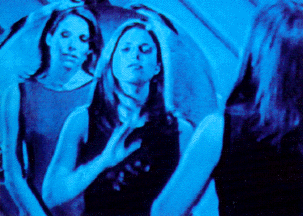

The contemporary drift is quite clear: Visual media are changing the way we hear the sounds we see. "An invention of our fast disappearing century, audio art is founded in the idea that sound – as opposed to pitch relationships and a harmonic system – can be the organizing principle of musical activity," writes David Toop in his excellent catalogue essay for the Detroit Artists Market's new exhibition, "Detachable Music for a Collapsible Culture," curated by Windsor artist Mark Laliberte.
The presence of two figures looms over any discussion of audio art: the American composer John Cage, and the Italian Futurist Luigi Russolo. Cage's radical compositions – his 1951 "Imaginary Landscape No. 4" involved 24 radios tuned to random stations – defined the role of music as "purposeless play," rather than something to passively listen to. His own statement, ''Music doesn't stop, only listening," perhaps best defines his sound aesthetic. Similarly, Russolo's 1913 Futurist manifesto, "The Art of Noise," prodded individuals to attend to the auditory ambience of the street, rather than the concert hall-symphony. He created his own orchestra of odd instruments which included pipes, buzzers and hand tools.
These sensibilities thrive in DAM's intensely entertaining exhibition which approaches music –combined to varying degrees with other mediums: soap operas, rock videos, American musicals, time-space dimensions, sex machines – as a state of awareness. And it is particularly welcome to experience this in a gallery, the kind of setting which typically relies so heavily on the visual.
Briefly: there's the wild soundtrack of Dennis Day's video, titled "An Illustrated History of Western Music" (from Gregorian chants to Julie Andrews belting out "The Sound of Music"); the ominously mounted instrument-phallus-weapon-body-evoking sculptures by Brooklyn artist Ken Butler; and Christopher Bissonnette's "Demarcation," which explores the interstices between sound and light. And tucked away in a curtained-off corner is Mark Cyr's interactive "Orgasmatron" – just go and try it (yes, its title has everything to do with its function).
Stomping, singing, guitar playing, weird vocalizations and choreography highlighted by blaring primary colors barely begin to outline the seamlessly executed, angst-ridden video titled "Combo.'' Stella Händler and Philipp Schmid, the Swiss duo who made the work, describe it as "(anti) pop music'' in which " ... you hear what you see and you see what you hear." The tape's three performers blend the atavistic wails of concept artist Bruce Nauman's clowns with high-tech cool to riveting effect.
Debra Bosio Riley's "Silent Blue Soap" is addictive and hilarious. She has installed blue furniture – a couch with pillows, carpet and lamps – in a blue-lit, dark room. The couch faces three screens on which play TV soap operas that Riley has recut and digitally manipulated into a bizarre, sexual, robotic dance which highlights an array of broken-down movements, word portions and gestures. Lips move, but not in ways that form full words. Bodies move, but don't complete actions.
In one soap opera sequence, all the characters seem to have cuts on their faces; in another – or maybe it's the same one – each scene features a pale, massive, grotesque hand gripping a chest, a wine glass, a waist. Accompanying these ritualistic visuals is a tinny piano score, the kind you'd hear played during an amateur dance recital. The result is horrifically entertaining and brilliant.
Mark Laliberte has put together a spare but supercharged installation, in which DAM's roomy galleries are only the first step into an inner acoustic space, the virtual reality of the imagined.

Lynn Crawford writes about art & literature for The Metro Times: email her